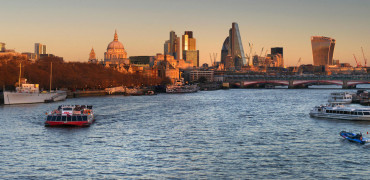Reading the construction press over the past few months, one term has started to appear increasingly frequently: mixed-use development.
These are springing up all over the UK, from Sunderland to Manchester, Leeds and London.
The mixed-use approach is receiving a boost of local authority approvals with projects ranging in value from £60million to the on-going Battersea power station re-development at £8 billion.
A mini-city eco system - Mixed-use is a description that can apply to a single building. For example, a single high rise project may include a hotel, offices and residential apartments.
Larger projects, however, may involve a single site that includes a number of buildings. Stockport’s Weir Mill regenerated site will have residential apartments, commercial co-working office space, retail and leisure facilities. It will be, as one of the project partners described it, a ‘mini-city eco system’.
The key is making sure technologies work in harmony
Different requirements
This is a useful way to think of a mixed use project.
The different uses of the space, be it one building or many, mean that the building services have to create a balanced eco-system – and that’s one of the main challenges.
Offices and homes require different types of heating and cooling at different times of day.
A leisure centre with a swimming pool can swallow up a lot of energy, and an on-site hotel will need to meet peak demands for hot water.
Finding efficiencies
But these same challenges can also be used to create energy efficiencies and carbon savings with the right technologies in place.
For example, take the different cooling and heating requirements of offices and homes.
Simultaneous heating and cooling chillers are an ideal solution for mixed-use developments where heat removed from offices during the day can supplement hot water for residential areas of the site.
Different solutions
Another chiller-based approach is the dedicated heat recovery heat pump.
Here, a water source heat pump uses the condenser water or return chiller water as its energy source.
This improves the performance of large capacity chillers and dedicated plant often found in office projects, and greatly enhances overall energy performance of the building’s heating and cooling.
Mixed use, mixed technologies
Of course, in today’s mixed use developments we are very likely to see a greater use of renewable technologies such as heat pumps.
The UK Government’s Green Industrial Revolution focuses on heat pumps as one of the crucial technologies in reducing our reliance on fossil fuels for heating and hot water.
Modern heat pumps, such as the Ecodan QAHV can provide hot water to 90oC – making them ideal as replacements for gas boilers even on commercial projects.
Used alongside Ecodan’s domestic heat pumps in a mixed-use project it is possible to remove gas heating and hot water altogether.
A balanced eco system
There are numerous options for balancing the mixed use ‘eco system’: The key is to make sure that the technologies work in harmony to optimise the energy savings as well as occupant comfort across the project.
At Mitsubishi Electric, our range of commercial and domestic heating, cooling and renewable technologies mean that we are well placed to offer advice and insights into making the most of today’s building services equipment.
And our experience in a broad range of projects and building types means that we can be there to help at every step of delivery, so there is a better opportunity to provide a coordinated outcome that benefits designers, installers and end-users.
James Harwood is a Business Development Manager


